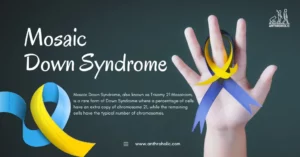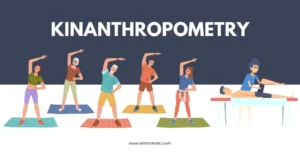AI Answer Evaluation Platform Live Now. Try Free Answer Evaluation Now
Verbal Communication
Verbal communication, a cornerstone of human interaction, has played an essential role in the evolution of societies and cultures worldwide. As an area of focus in anthropological research, verbal communication sheds light on various facets of human behavior and society, encompassing linguistics, culture, cognition, and human development [1].

Evolution and Importance of Verbal Communication
Historical Perspective
The origins of verbal communication can be traced back to approximately 50,000 to 2 million years ago, depending on the accepted definition of ‘language‘ [2]. Homo sapiens, evolving linguistic capabilities, found a potent tool for survival, allowing them to share information about their environment and coordinate actions. This shared system of symbols and sounds not only facilitated survival but also played a pivotal role in human development and societal advancement.
The Significance of Verbal Communication
Verbal communication has profound implications, both on a micro and macro level:
- Cognitive Development: The ability to communicate verbally significantly influences cognitive development, enabling the acquisition of knowledge, reasoning, and problem-solving skills [3].
- Social Interactions: It aids social interactions and cooperation, forming the basis for relationship-building and community cohesion [4].
- Cultural Transmission: It is integral to cultural transmission, preserving traditions, rituals, and shared beliefs across generations [5].
Components of Verbal Communication
Verbal communication is composed of several key elements:
- Vocabulary: The set of words within a language that a group understands.
- Syntax: The arrangement of words to form meaningful sentences.
- Semantics: The meaning derived from individual words and sentences.
- Pragmatics: The interpretation of context and social cues to understand a message [6].
These components work together to convey clear and meaningful messages.
Role of Culture in Verbal Communication
Culture significantly shapes verbal communication, influencing language, vocabulary, and semantics. People from different cultures not only use different languages but also have unique ways of expressing ideas and emotions.
| Culture | Unique Linguistic Feature |
|---|---|
| Navajo | Verb-heavy language with complex grammar |
| Toda | Use of distinct whistle sounds for long-distance communication |
| Japanese | Multiple levels of formality based on social hierarchy |
Verbal Communication in the Digital Age
The digital age has brought new dynamics to verbal communication. With the advent of voice calls, voice notes, video conferencing, and AI voice assistants, the essence of verbal communication has evolved, transcending geographical boundaries and time zones. Although non-verbal cues might be diminished, the importance of clarity, tone, and choice of words in these platforms cannot be overstated.
Verbal Communication: An Indispensable Tool for Anthropological Research
Anthropologists heavily rely on verbal communication while conducting research. Interviews, group discussions, and participation in community activities are often the primary methods anthropologists use to gather data. These methodologies inherently involve the use of language and spoken communication.
The Art of Ethnographic Interviewing
In anthropological research, ethnographic interviews serve as a fundamental tool for gathering in-depth information about a community or culture. It is here where the nuances of verbal communication come into play:
- Building Rapport: Establishing trust is crucial in anthropological studies. Effective verbal communication helps build rapport with participants, allowing them to open up and share freely.
- Understanding Context: Anthropologists use verbal communication to understand the context of the community they’re studying, gleaning insights from the meanings behind words, phrases, and local idioms.
- Interpreting Cultural Significance: Language reveals much about a culture’s beliefs, values, and perceptions. The way people communicate verbally can offer valuable insights into their culture and way of life.
Linguistic Anthropology and Verbal Communication
Linguistic anthropology, a subfield of anthropology, specifically focuses on how language influences social life. Linguistic anthropologists analyze verbal communication to understand how people conceive their world and their place within their community. They also look at how social structures and cultural practices can be both reflected and shaped by language use.
Verbal Communication and Cross-Cultural Research
In cross-cultural research, verbal communication is both a tool and a subject of study. Effective cross-cultural communication involves:
- Language Proficiency: Adequate knowledge of the local language, including dialects and idioms, is vital for accurate data collection and analysis.
- Cultural Sensitivity: Understanding and respecting the communication styles and etiquette of different cultures to ensure effective communication.
- Awareness of Non-verbal Cues: Recognizing that communication extends beyond words to include tone, pace, and body language.
Challenges in Verbal Communication
Despite its importance, verbal communication is not without its challenges:
- Language Barriers: Differences in language or understanding can lead to miscommunication.
- Cultural Differences: Varied cultural interpretations can lead to confusion or misunderstandings.
- Emotional Barriers: High emotional states can disrupt effective verbal communication.
- Noise and Distractions: External factors can impede message delivery or interpretation.
Future Directions
As societies evolve and adapt to changing technological, environmental, and social contexts, so does verbal communication. The continuing study of verbal communication from an anthropological perspective will shed more light on the complexities of human interaction and how it shapes our world.
Conclusion
The study of verbal communication from an anthropological perspective offers significant insights into human cognition, social interactions, and cultural exchanges. While challenges persist, the evolution of verbal communication continues to adapt and thrive, molding and being molded by the cultural, technological, and social changes that define the human experience.
References
[1] Duranti, A. (1997). Linguistic Anthropology. Cambridge University Press.
[2] Botha, R., Knight, C. (2009). The Cradle of Language. Oxford University Press.
[3] Vygotsky, L. (1980). Mind in society: The development of higher psychological processes. Harvard University Press.
[4] Dunbar, R. I. M. (2004). Grooming, Gossip, and the Evolution of Language. Harvard University Press.
[5] Ahearn, L. M. (2011). Living Language: An Introduction to Linguistic Anthropology. Wiley-Blackwell.
[6] Levinson, S. C. (1983). Pragmatics. Cambridge University Press.




